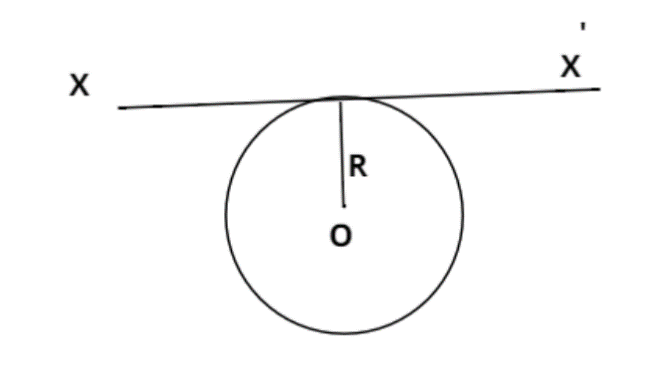Question
Question: A thin metal wire of length ‘L’ and uniform linear mass density ‘\(\rho \)’ is bent into a circular ...
A thin metal wire of length ‘L’ and uniform linear mass density ‘ρ’ is bent into a circular coil with ‘o’ as center. The moment of inertia of a coil about the axis XX′ is?

(a) 8π23ρL3 (b) 4π2ρL3 (c) 4π23ρL3 (d) 8π2ρL3
Solution
Hint: In this question use the concept that the length of the wire will be equal to circumference of the circular coil that is L =2πr, where r is the radius of the circular coil. The moment of inertia of any circular loop around the tangent is given as 23mr2, so use the concept that the mass of the circular coil will be equal to the mass of the thin wire that isρL. This will help approaching the problem.
Complete step-by-step solution -
Length of thin metal wire = L
And uniform mass density = ρ
As we know that the mass of any object is the product of uniform mass density and the length of the object.
Therefore, mass (m) of the thin metal wire = ρL
Now this wire is bent into a circular coil.
So the length of the wire = circumference of the circular coil.
Therefore, L = 2πr, where r is the radius of the circular coil.
⇒r=2πL............... (1)
As we know the moment of inertia of the circular coil about the tangent XX’ is given as, 23mr2.
Where, m = mass of the circular coil which is equal to the mass of the thin wire = ρL........... (2)
And r = radius of the circular coil.
Let the moment of inertia be denoted by I.
So the moment of inertia of a circular coil about the axis XX’ is
I=23mr2
Now substitute the values of (r) and (m) from equation (1) and (2) we have,
⇒I=23(ρL)(2πL)2
Now simplify this we have,
⇒I=23(ρL)(4π2L2)=83π2ρL3
So this is the required moment of inertia of a circular coil about the axis XX’.
So this is the required answer.
Hence option (A) is the correct answer.
Note – A body has the tendency to resist angular acceleration, so moment of inertia is the measure of tendency of the body to resist this angular acceleration. In general moment of inertia is given as I=∑miri2that is it is equal to the sum of the product of each element’s mass and the square of the distance of these elements from the axis about which moment of inertia has to be taken out.
